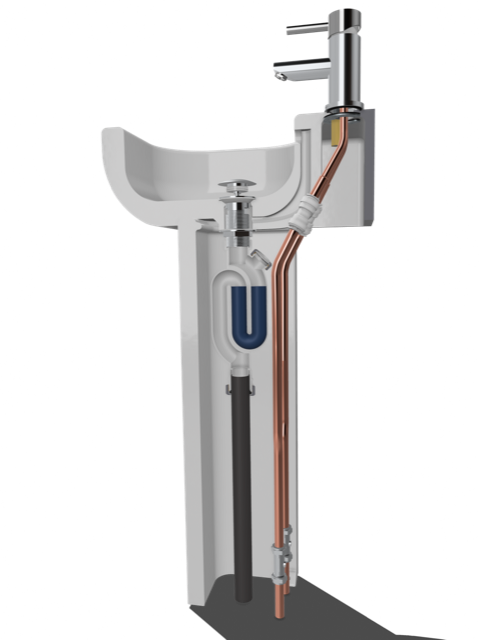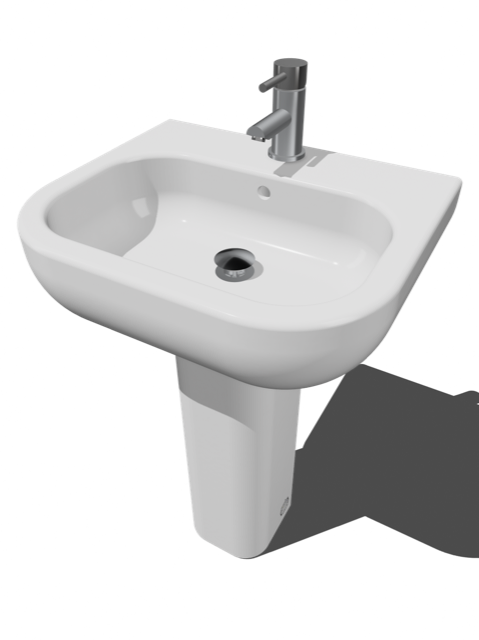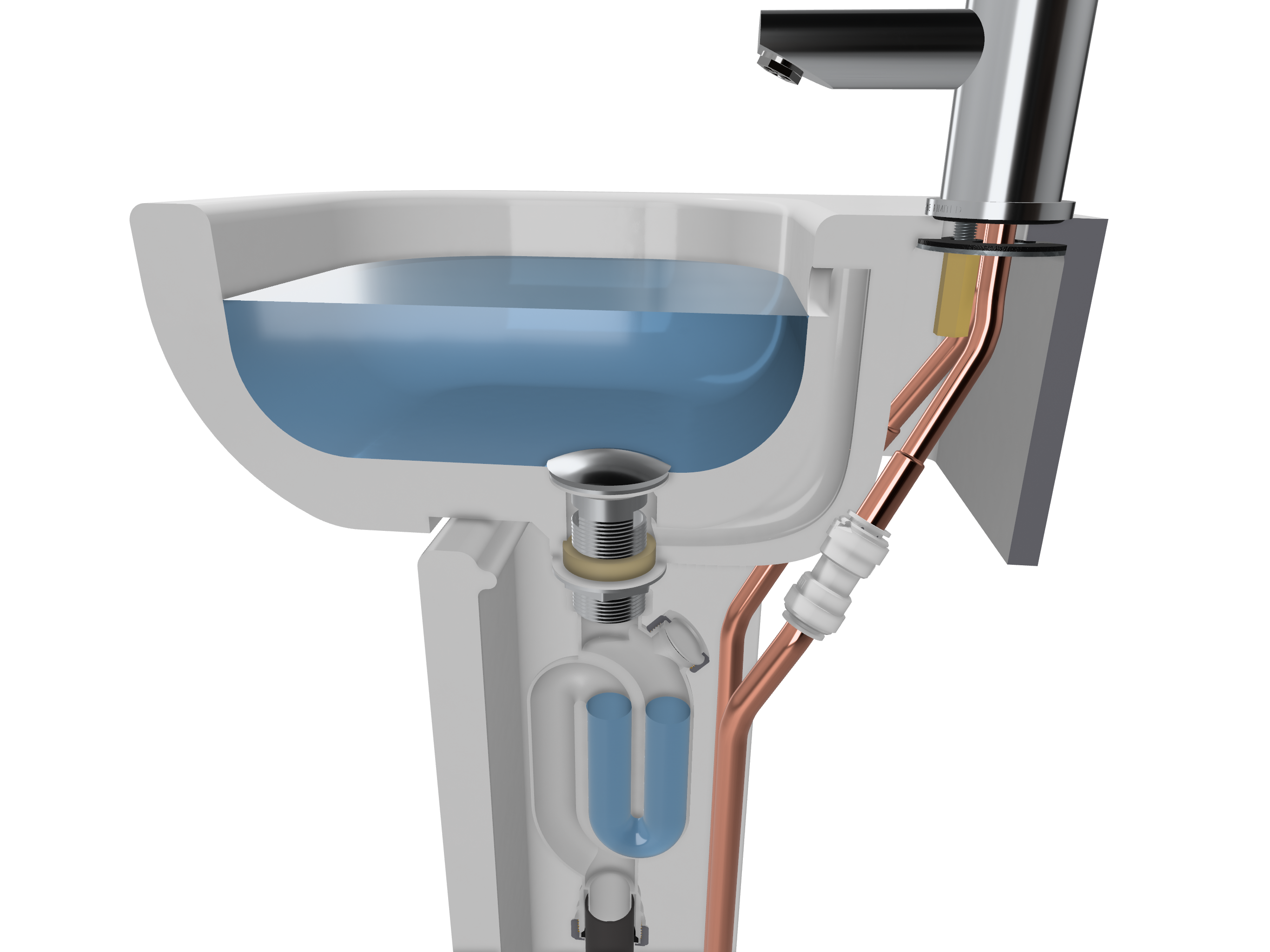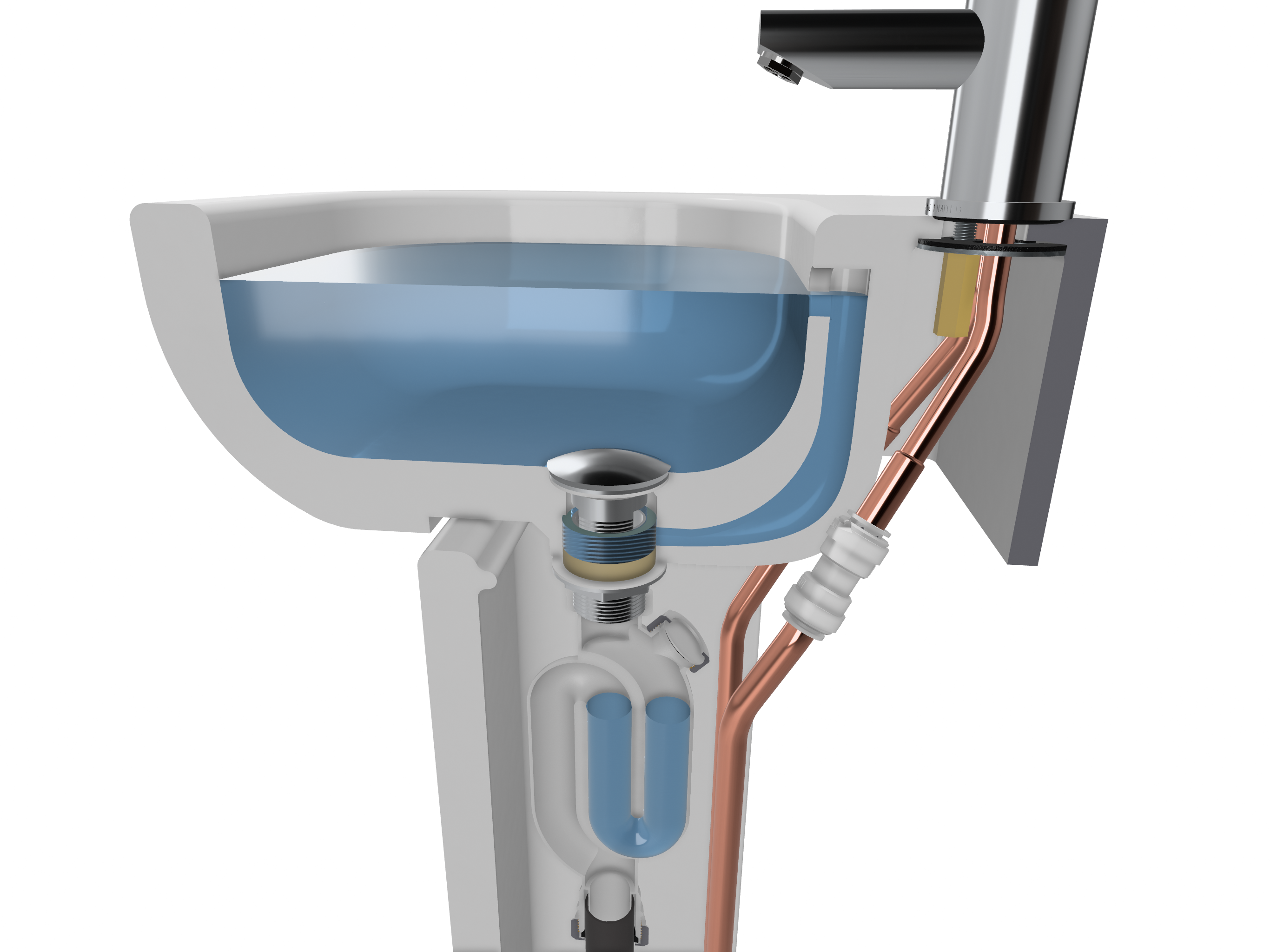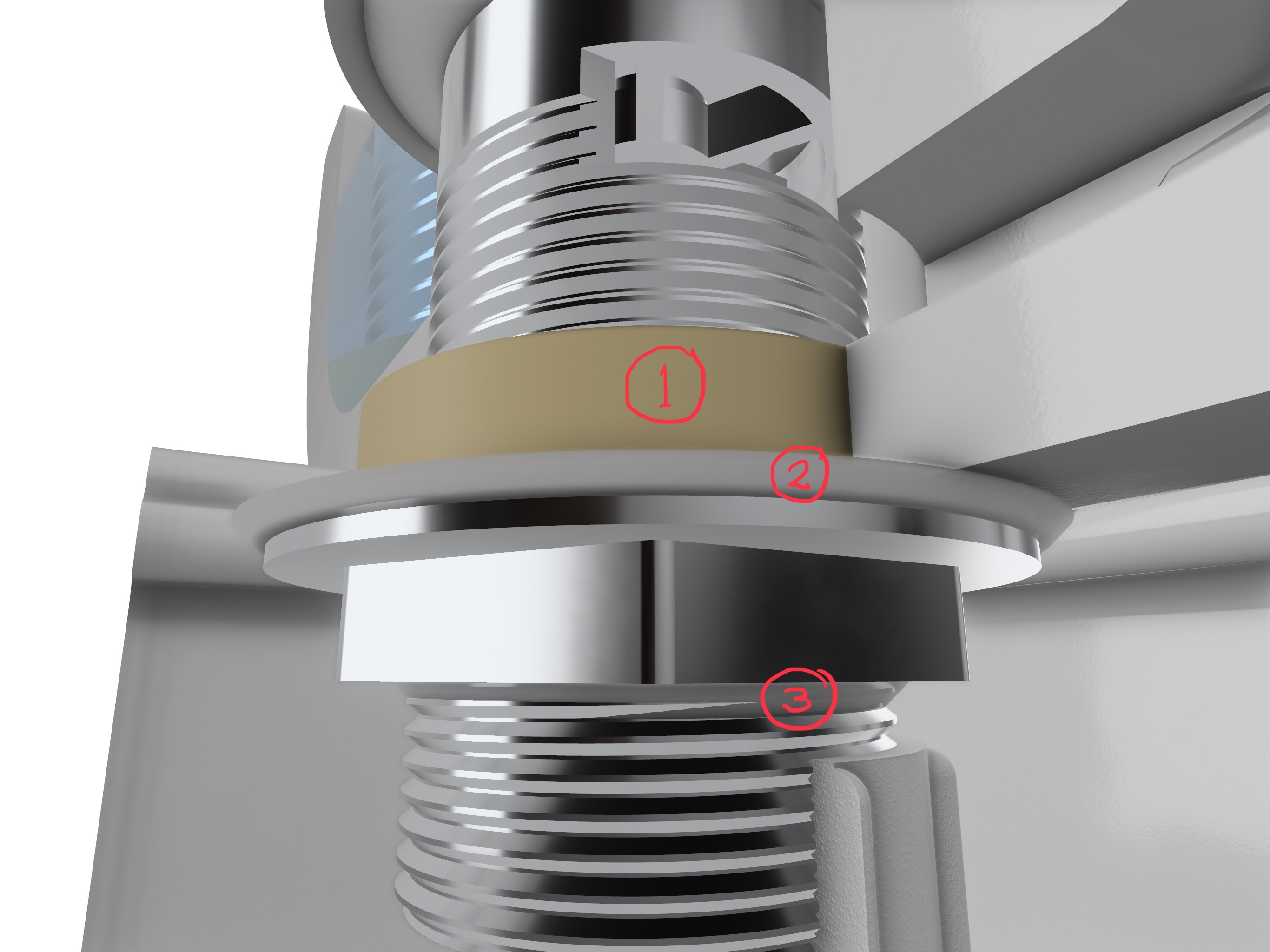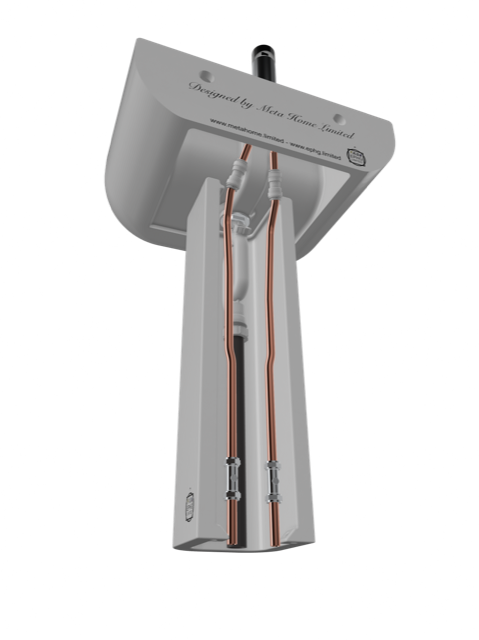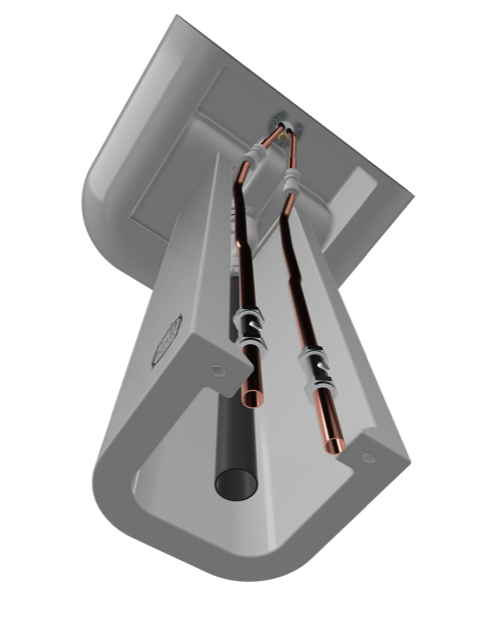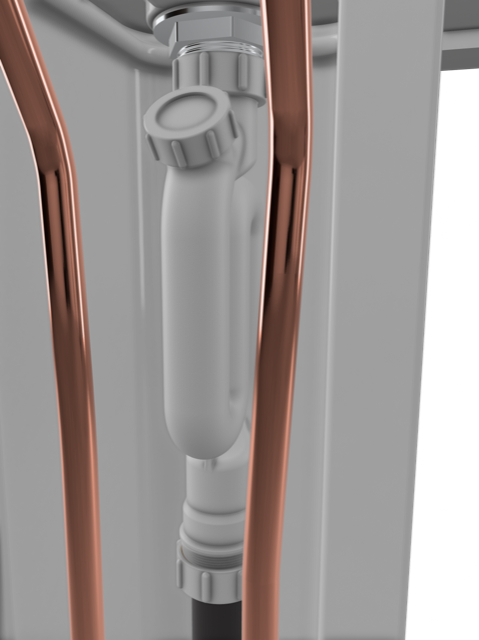Basin Problems & Cures
Welcome to our article, about basin problems and their cures, where we aim to give you an explanation of as many problems and cures as we can.
Just below is a list of common basin problems, with a more indepth explaination to there cures below.
18 Common Basin Problems plus a 3 dimentional basin.
- 3D Digital Basin!
- Can a cracked basin be repaired?
- My basin isn't holding water!
- Basin not emptying fully!
- How does the overflow on a basin work?
- How should a basin waste kit be sealed
- Why is my basin leaking water, when in use?
- Leaking basin tap!
- Why can I not get hot water out of my basin tap?
- Why am I getting smells coming up through the basin?
- Why is my basin emptying too slow?
- Where can I find the isolation valves underneath my basin?
- Which side should the hot water pipe be on the basin?
- Why has my basin tap come loose?
- Should the basin be secure to the pedestal?
- What should the pedestal height and dimensions be?
- What type of basin trap should I be using?
- What size should the wastepipe be coming out of the basin trap?
- Whats the difference between a sink & a basin?
3D Digital Basin
Just before reading into the each part of the basin problems, do feel free to check out the 3D digital basin on your own compatible device and view the digital washhand basin in 3D below. This will enable you to view the basin at many different angles, well being possible to listen to the voiceover of this article.
You should be able to also use this 3D image in AR, which is great for getting to feel the height and the width of the basin, specially if your planning on a basin where there's never been one before.
If you're reading this article in 2022, you may wonder what AR is. AR is new technology, that can allow you to project the 3D digital basin into your room of choice, using a device that is compatible of showing the asset in your room. Try it below!
Can a cracked basin be repaired
Trying to recover from the shock of cracking your basin sink, it may not always be the solution, however, we will try to explain the best way to repair a cracked basin that could possibly save yourself from paying for a new one any time soon.
The main thing you have to consider when repairing a cracked basin is the ability to repair the basin and noticing there never being a repair done afterwards.
Assuming your basin is made out of porcelain, it's a little like repiaring a vase, the cracks will always be there, but you could use heavy duty glue to put it back together. The only difference to repairing the vase is, you would need to make sure the basin is left water proof.
Using heavy duty glue, you will need to cover every exposed porcelain to porcelain material with the glue, and placing it together, you will need to make sure that the glue sets in accordance to the time given on the instructions of the glue.
To apply extra strengh, using a fibreglass filler, apply this to the underside of the basin for reinforcement.
On the upper side of the basin, which can be used on the lower part of the basin, if no fibre glass has been used, you can apply a resin filler for porcelain.
Once the filler has set, you will need to sand either by hand, but preferably by machine, as this could be a timely process.
Using a bonding agent, this should help the enamel stick to the surface.
The next part, is where most people will get stuck, because, you will need a professional spray machine, and a means to matching a color to the basin, just like an artist, the better the artist is, the more likely anyone using the basin, never being able to notice the basin being cracked.
My basin isn't holding water
Assuming your basin isn't holding water, in some cases, the problem can be simple or a little bit more difficult, so their coould be many options to resolving the basin from holding water.
In many basins, specially the pop up plugs, you will find on the plug, a washer, and in some cases, the washer will come away from the plug.
Sometimes, the plug will not be adjusted into the basin waste kit correctly, and in other times, the washer may be warn or perished.
When adjusting the plug on a basin, you could screw the plug in, however, in most basins, you will need to adjust the screw or/and nut below the plug. This is generally easy, as in most cases, this can be done within a couple of minutes or so, with or without tools.
If the issue is with the washer, there are many washers on the market, however, in some cases, the washer may be designed for the specific plug, and therefore you will need to contact the manufacture.
Basin not emptying fully
There is generally a couple of reasons a basin won't fully empty, one that the basin waste is blocked, and the other being the waste exit isn't at the lowest point.
For any blocked wastes, please read the blocked waste below.
When we buy or inherit a basin already installed, we expect this basin to be correctly moldered, so that the waste exit becomes the lowest point, other reasons could be the wall that the basin is screw too, isn't level, causing the basin to not be level.
Other issues from an un-level basin is that, the exit waste point, to the back of the basin, not having a true 90 degree level, very similar to a basin, I personally inherited, when I bought into a property.
How does the overflow on a basin work
As shown in the image, when the water rises to the overflow, the water starts to enter via the overflow exit and into the waste below the plug.
The higher the water, the more water going through the overflow, however, if there is too much water filling up the bowl, the overflow will not be able to taken enough water away, causing the water to flow over the bowle, rather than the water exiting the overflow.
By looking at the image, you will see there is a hole in the waste, even though for this basin, the whole looks a little high, this is generally down to the mold of the basin, as in very few cases, this does happen, causing a build up of dirt.
How should a basin waste kit be sealed
As shown in the image, (1) plumbers mate being place between the waste nut and the basin, to create a waterproof seal, so no water can get past.
Some people like to squirt a load of silicone between the nut and the basin, instead of plumbers mate, however, silicone has a tendency to go off when being mixed with water for such a long period, reducing the life span, and decreasing the longevity of the seal between the waste nut and the basin.
As an added extra, not that it is always required, but can add as an extra barrier and strengthening the nut in place, putting a lip of sealant around the basin waste kit (2)(3) generally gives that little extra, making you feel you've done a better job.
In some cases, the quality of the work isn't good enough, which could be due to lack of sealant or plumbers mate, and when a leak occures, the best method is, to take the basin off the wall, take the basin waste kit away and clean, before fitting again.
Why is my basin leaking water, when in use
In most cases, when a basin leaks water, but only in use, that takes away certain areas of concern, such as the water to the tap.
The best places to check, to try and find where the leak is coming from, would be, water comin gfrom the exit of the taps, and crawling to the back, and exiting where the whole is, the place you put you tap through, when connecting it to the basin. Please note. some taps are known for this, specially the single taps.
You could also find the seal to the kit leaking, as explained above.
Checking the trap is a good place to check, checking that it's not loose. Other than that, there isn't much else to check other than the pipes leading to the tap, possibly an internal crack to the tap.
Why can I not get hot water out of my basin tap
The reason you can't get hot water out of your basin, may not have anything to do with the basin tap, it could be an air lock, or a boiler problem, maybe someone has turned the isolation valve off.
In some gas combination boilers, when a fault occures, the boiler isolates the water passing to your hot tap and in most they don't. A simple way of checking this being an issue would be to check all your taps, and if non of them are running, and as long as you've not manually isolated anything, there's a good chance that the gas boiler has self isolated itself.
Another problem, would be an air lock, or the filter is blocked. If your water is under pressure, and not gravity fed, it is likely not going to be an air lock, and more than likely the filter. If you do have an airlock having a gravity fed system, you can get rid of the airlock, by forcing water pressure back through the hot pipe.
If all of the above failed, it may be worth isolating both feeds to the tap and checking them out individually. The valve in the tap could be broken and time for a new valve or a basin tap.
Why am I getting smells coming up through the basin
The could be a few reasons why your basin is bringing back smells, from a lack of water, a partial blockage, or your basin trap leaking.
A leak from a basin trap, as long as it is part of the trap that holds the water, the water will reduce, allowing the air cap to become open. To fix this issue, you may need to tighten the holding nut that is submerged in water, or replace the basin trap if it is split.
If you find your trap dry, no holding water and no leak where it previously had water, this can be due to your basin not being is use for such a long period of time. This generally happens when you have a spare room with a seperate basin that nobody uses. An easy way to resolve this would be to run the basin and give it time for the air to clear. Opening a window may be the best thing.
If you have a partial blockage, this can cause a pocket of water to suck the water out of the trap, or push foul air past your trap. If you find your drain pipe being lengthy, sometimes, replacing the trap for an anti suction trap, may do the trick.
Why is my basin emptying too slow
The reason for your basin emptying too slow, is likely to be that, you either have a partial blockage, or the plug isn't opening enough.
If you feel the plug isn't opening enough, you should be able to take the plug out, and adjust the screw or/and nut behind it.
If the basin is still draining slowly when the plug is completely taken out, then it is definately a partial waste pipe blockage.
With some basin traps, you can find a hatch on the trap itself, just like the one in the images, which you could undo, and check for any objects inside. It may be possible, you'll have to take the trap completely out and clear it.
If the problem isn't with the trap, it could be that you have a blocked drain, taking away the problem with the basin.
Where can I find the isolation valves underneath my basin
Most isolation valves are chrome fittings, attached to the copper pipe that has a head attached, and requires a flat head screwdriver, to turn as shown in the image.
Very rarely, isolation valves are attached to flexy pipe, attached to the underneath of the tap.
To turn the isolation valve off using a flat head screwdriver, you would need to turn the flat head side to horizontal, and to turn the isolation valve on again, you will need to turn the valve to vertical, turning it a quarter of a turn.
If any of this confusers you, the isolation valve in the image, the head is currently in the horizontal position.
Just be aware, that isolation valves are not always the best of materials to use, and the older ones in particlar tend to leak. So it is possible that, you may need an emergency plumber.
Which side should the hot water pipe be on the basin
Wanting to know where the hot water flow should be coming up into the tap on the basin, then the answer would be, hot on the left, and cold on the right.
The reason for these standards are, related to blind people, and should still be industry standards of today. So this would then mean that mixer taps should follow suit, being that the inlet to the tap, should have the hot water coming up on the left hand side.
For those who are wondering where you take the point being the left hand side, you would have to face the front of the tap, and not behind.
Why has my basin tap come loose
The reason for your tap coming loose, most of the time, it is likely to be the tap or back nut not being tight enough, or the appropriate washer being warn, or missing.
The first option with a loose tap, as long as everything is intact, would be to tighten up the tap, tight enough so that it doesn't become loose, anytime soon.
If you find that the tap is still coming loose, it could be due to a warn thread on the basin tap, and therefore, if it isn't easy replaceable, you may just be better getting a complete new tap.
An old tip to securing your tap, would be to cement or glue the tap to the basin, however, once you get to this point, if further work was to be done, it won't be just a new tap you will need, it could also be the basin.
Should the basin be secure to the pedestal
In regards to securing the basin to the pedestal, there is no actual requirement for this, however, it is good practice you put some sealant on to stop movement, unless the instructions tell you otherwise.
With most basins, there is nowhere to place a screw, however, some of the old fashions basins have a back plate, that allows you to tighten the pedestal to the basin, however, as many years went by, this method disapeared, due to not being able to maintain the waste, if this was ever need, or so the rumours say, as this just seems to be a rumour.
To secure the basin and it's pedestal, you would need to screw the basin to the wall, in most cases now, a large bolt and screw. However, some basins, still having a hole, for a basic screw and raw plug. In regards to the basin, this should be screwed into the floor.
What should the pedestal height and dimensions be
Looking for the height of the pedestal, then you will find, no actual height, as the height is determend by the basin, and not the pedestal.
Most manufactures would sell you a pedestal plus basin, with the height between 800mm to 870mm, with the rule of the thumb being, 850mm, if you have a half pedestal, however, it is best if you want the height bespoked to those who are using it, to ask them of the height, and fit it to there desire.
What type of basin trap should I be using
The best basin trap all depends on the set up off your waste pipes, for example, if your waste pipe can come to the underneath of the pedestal, then the best option would be to bring it up through the inside of the pedestal, hiding it from being in sight. For this, you would be best getting a straight trap, like one shown in the picture.
If your waste is inside, or on the other side of the wall, you may be best getting a bottle trap, or a P trap, however, depending on the flow of the water, you may be best getting a P trap.
When buying a basin trap, it is always best to check that the trap isn't just any old trap, but one that is suited for basins, and attaches to the pipesize of, between 31mm to 33mm.
What size should the wastepipe be coming out of the basin trap
In most cases, waste pipes for basins should be about 32mm, however, from manufacture to manufacture, these sizes can slightly differ, for the reason, most fittings such as traps are universal, allowing for a slight thinner waste pipe, or a larger waste pipe.
Whats the difference between a sink & a basin
The difference between a sink and a basin, is hinted in it's name, however, most people still don't understand the concept between them both, and to be honest, we can understand why.
A basin, is discribed similar to a bowl, meant for washing your hands, for the bowl or basin being traditionally wider than it is deaper, and in most cases, not that deep at all.
A sink, is traditional a place to wash plates, bowles and basins, traditionally unatached basins, but later attached to the wall.
The word Basin, is more of a british term, than a world wide term, and in the US, it is revered more so as the Sink.
The best way to define a basin and a sink, would be to say the Kitchen Sink, or the Bathroom sink, maybe calling the bathroom sink a bathroom basin, or the wash-hand basin.
If you want to experience a basin but in AR, do feel free to check out out basin AR page.
